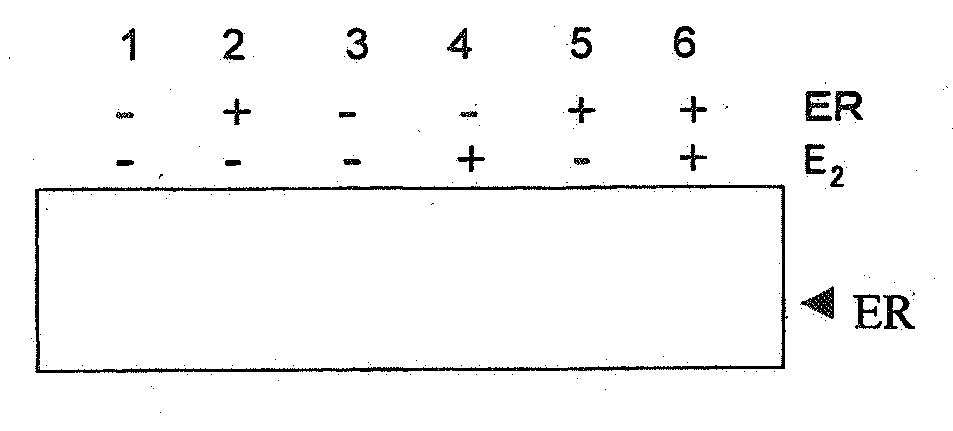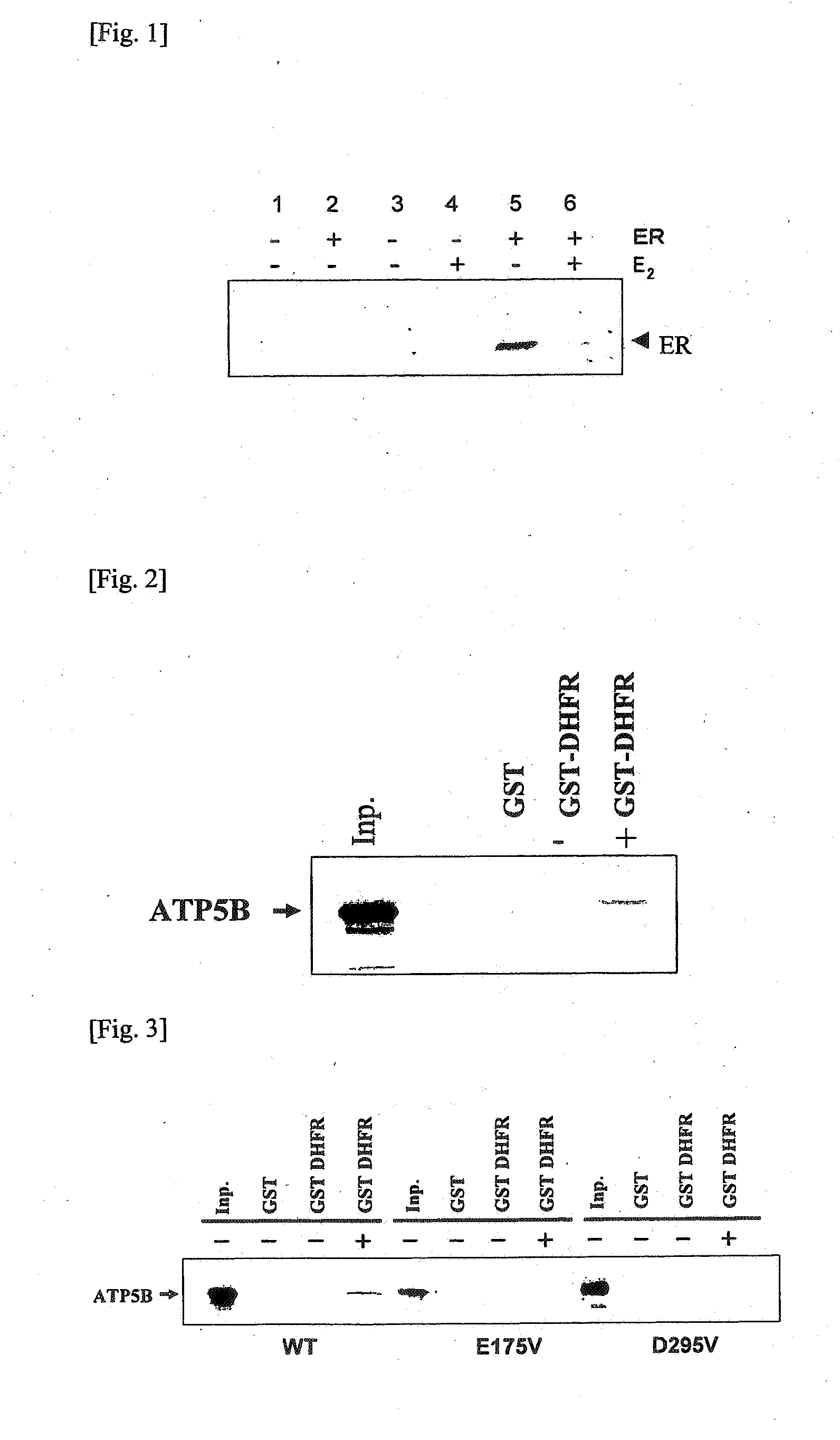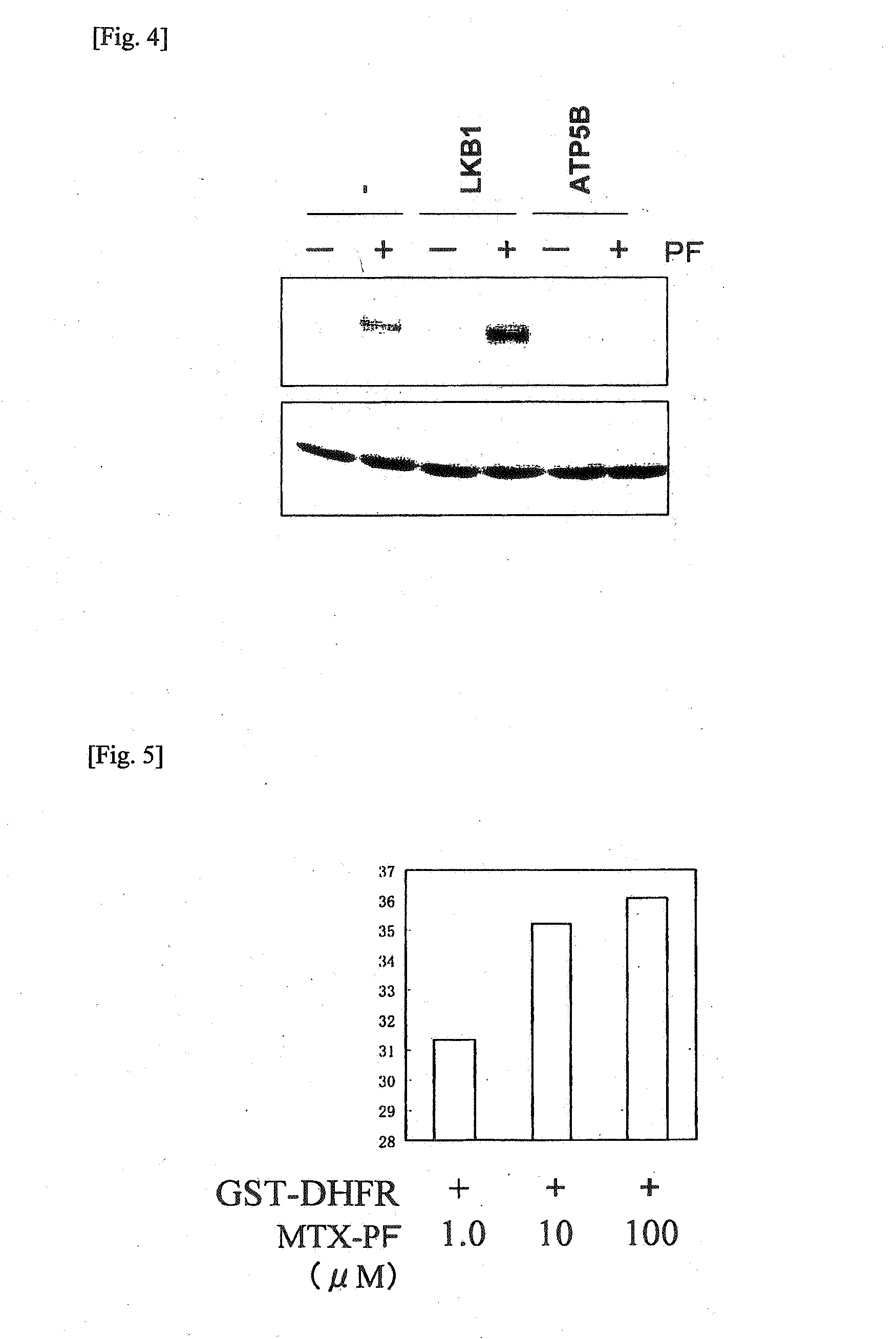Method for identifying target protein of drug and method for screening therapeutic agent for diabetes using the target protein
- Summary
- Abstract
- Description
- Claims
- Application Information
AI Technical Summary
Benefits of technology
Problems solved by technology
Method used
Image
Examples
example 1
Construction of Molecular Chaperone Protein
(1) Cloning of Molecular Chaperone Gene and Preparation of GST Fusion Molecular Chaperone Protein Expression Plasmid
[0142]Using oligonucleotides represented by SEQ ID NOs:28 to 77 (even numbers for 5′ side, odd numbers for 3′ side) as primers (e.g., a primer set for human HSPA1A by SEQ ID NO:28 and SEQ ID NO:29, the same shall apply hereinafter), cDNA sequences coding for the complete length regions of 25 species of chaperone proteins (human HSPA1A, human HSPH1, human HSPCA, human HSPD1, human DNAJA1, human HSPB1, human HSPE1, human HSPA4, human HSP90B1, human CCT6B, human TCP1, human HSPA14, human HSPA9B, human STCH, human HYOU1, human HSPB5, human HSPB2, human DNAJA2, human DNAJB1, human DNAJB2, human HCG3, human DNAJB11, human DNAJC11, human DNAJC7, human DNAJC6) represented by the amino acid sequences of SEQ ID NO:3, 4, 5, 6, 7, 8, 9, 10, 11, 12, 13, 14, 15, 16, 17, 18, 19, 20, 21, 22, 23, 24, 25, 26 or 27 were prepared by carrying out ...
example 2
Detection of Estrogen Receptor as the Target Protein of 17-β Estradiol
[0144](1) Cloning of estrogen receptor gene and preparation of V5 tag fusion estrogen Receptor Expression Plasmid
[0145]A gene cDNA coding for the complete length region of estrogen receptor a (to be referred to as ERα hereinafter) as a species of the steroid hormone receptors shown by a conventionally known data base was cloned using two species of DNA primers (SEQ ID NO:78 and SEQ ID NO:79) designed in accordance with the sequence shown by the RefSeq accession number NM—000125. Illustratively, a DNA fragment of about 1.78 kbp coding for the complete length region of ERα was amplified by carrying out PCR using a primer set of SEQ ID NO:78 and SEQ ID NO:79 and using a HeLa cell-derived cDNA library (Clontech) as the template. The PCR reaction was carried out at 98° C. (1 minute) and subsequent 35 repetition of a cycle consisting of 98° C. (5 seconds), 55° C. (30 seconds) and 72° C. (5 minutes), using a DNA polymera...
example 3
Identification Method of the Present Invention Using Various Molecular Chaperones
[0151]It is known that FKBP 12 is one of the target proteins of FK 506 and FK 1706 (J. Biol. Chem. 1993 Nov. 5; 268(31): 22992-22999, Eur. J. Pharmacol. 2005 Feb. 10; 509(1): 11-19).
[0152]It is known that glucocorticoid receptor (hereinafter GR) as a species of human steroid hormone receptors is a target protein which shows the drug effect of dexamethasone (J. Clin. Invest. 1995 June; 95(6): 2435-2441).
[0153]It is known that human dehydrofolate reductase (to be referred to as DHFR hereinafter) is a target protein which shows the drug effect of methotrexate (hereinafter MTX) (J. Med. Chem. 2000 Oct. 19; 43(21): 3852-3861).
[0154]Androgen receptor (hereinafter AR) which is known as the target protein of 5a-dihydrotestosterone (hereinafter DHT) (J. Steroid Biochem. Mol. Biol. 1993 December; 46(6): 699-711) is contained in the soluble fraction of a human prostate-derived cell, LNCaP cell (ATCC).
[0155]Mineral...
PUM
| Property | Measurement | Unit |
|---|---|---|
| Fraction | aaaaa | aaaaa |
| Therapeutic | aaaaa | aaaaa |
Abstract
Description
Claims
Application Information
 Login to View More
Login to View More - R&D
- Intellectual Property
- Life Sciences
- Materials
- Tech Scout
- Unparalleled Data Quality
- Higher Quality Content
- 60% Fewer Hallucinations
Browse by: Latest US Patents, China's latest patents, Technical Efficacy Thesaurus, Application Domain, Technology Topic, Popular Technical Reports.
© 2025 PatSnap. All rights reserved.Legal|Privacy policy|Modern Slavery Act Transparency Statement|Sitemap|About US| Contact US: help@patsnap.com



